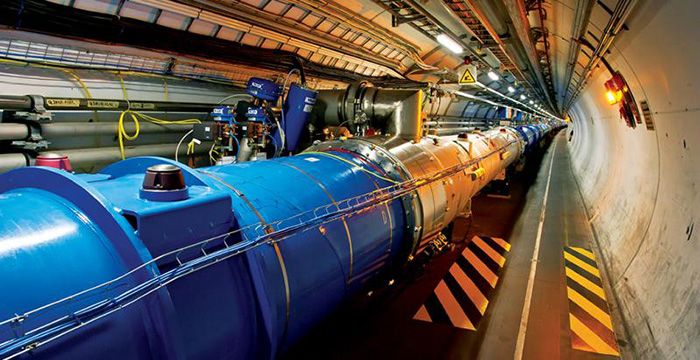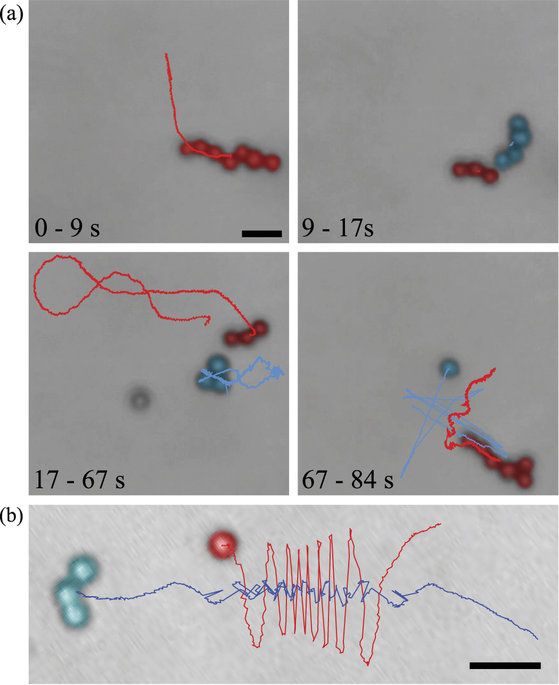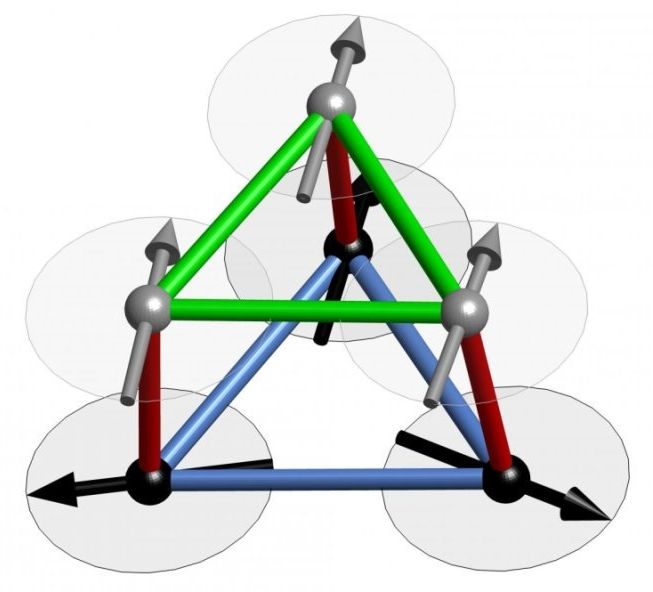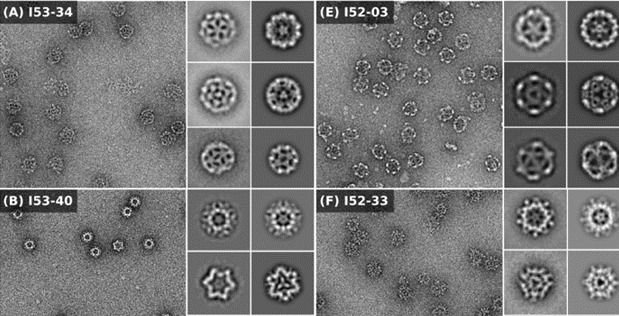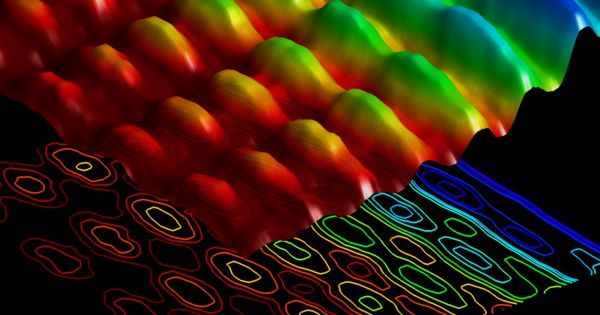Archive for the ‘particle physics’ category: Page 507
Jul 28, 2016
Physicist offers leading theory about mysterious Large Hadron Collider excess
Posted by Andreas Matt in categories: particle physics, space
In December of last year, scientists at the Large Hadron Collider in Europe announced startling results hinting at the existence of an undiscovered subatomic particle—one with a mass six times heavier than the Higgs boson, the particle that made headlines in 2012.
The evidence is still thin, but if more data confirm the finding, it could sharpen humankind’s understanding of the building blocks of the universe.
“This was a very surprising announcement and a puzzle at the same time, because the lifetime and mass of the particle could reveal something else beyond simply one extra particle, if it turns out to be a real signal,” said Kyoungchul “K.C.” Kong, associate professor of physics and astronomy at the University of Kansas. “Yet we do not claim this as a discovery, and we need more data.”
Continue reading “Physicist offers leading theory about mysterious Large Hadron Collider excess” »
Jul 28, 2016
Could Dark Energy Be Caused By A Reaction To What’s In The Universe? (Synopsis)
Posted by Karen Hurst in categories: cosmology, particle physics, quantum physics
“Another very good test some readers may want to look up… is the Casimir effect, where forces between metal plates in empty space are modified by the presence of virtual particles.” –Gordon Kane
If you ask what the zero-point energy of space itself is, you can sum up all of the quantum fluctuations you can that arise in quantum field theory, and arrive at an absurd answer: 120 orders of magnitude greater than the observed. Yet if you assume that there’s an incredible cancellation and you get exactly zero, that removes the one thing our Universe needs to explain its expansion: dark energy.
Jul 28, 2016
Versatile microrobotics using simple modular subunits
Posted by Klaus Baldauf in categories: biotech/medical, particle physics, robotics/AI
The realization of reconfigurable modular microrobots could aid drug delivery and microsurgery by allowing a single system to navigate diverse environments and perform multiple tasks. So far, microrobotic systems are limited by insufficient versatility; for instance, helical shapes commonly used for magnetic swimmers cannot effectively assemble and disassemble into different size and shapes. Here by using microswimmers with simple geometries constructed of spherical particles, we show how magnetohydrodynamics can be used to assemble and disassemble modular microrobots with different physical characteristics. We develop a mechanistic physical model that we use to improve assembly strategies. Furthermore, we experimentally demonstrate the feasibility of dynamically changing the physical properties of microswimmers through assembly and disassembly in a controlled fluidic environment. Finally, we show that different configurations have different swimming properties by examining swimming speed dependence on configuration size.
A result from an experiment in Hungary catches the attention of a group of theorists in the United States.
Jul 26, 2016
Pixel-array quantum cascade detector paves the way for portable thermal imaging devices
Posted by Karen Hurst in categories: particle physics, quantum physics
Finally, portable thermal imaging devices could be here soon.
The primary source of infrared radiation is heat—the radiation produced by the thermal motion of charged particles in matter, including the motion of the atoms and molecules in an object. The higher the temperature of an object, the more its atoms and molecules vibrate, rotate, twist through their vibrational modes, the more infrared radiation they radiate. Because infrared detectors can be “blinded” by their own heat, high-quality infrared sensing and imaging devices are usually cooled down, sometimes to just a few degrees above absolute zero. Though they are very sensitive, the hardware required for cooling renders these instruments less-than-mobile, energy-inefficient and limits in-the-field applications.
A paper published this week in the journal Optics Express, from The Optical Society (OSA), describes a new type of portable, field-friendly, mid-infrared detector that operates at room temperature. Room-temperature operation, notes Andreas Harrer of the TU-Wien Center for Micro- and Nanostructures, Austria and the first author of the paper, “is essential for detectors to be energy-efficient enough for portable and handheld applications. We want to pave the way to an infrared-detection technology which is flexible in design and meets all requirements for compact integrated field-applicable detection systems.”
Jul 26, 2016
Novel state of matter: Observation of a quantum spin liquid
Posted by Karen Hurst in categories: particle physics, quantum physics
Excellent article on improving crystalized formations & usage.
According to conventional understanding, if the interactions are isotropic (where all spin directions are possible), this phenomenon can occur if the spins are arranged in triangular geometries and the interactions between them are antiferromagnetic favouring antiparallel alignment of the spins. For three atoms forming the corners of a triangle, the electronic spin of one atom cannot simultaneously be oriented antiparallel to those on both the other two atoms. In real materials that contain triangular units coupled by antiferromagnetic interactions this “frustration” can prevent the spins from coming to rest in a particular orientation even at absolute zero temperature, instead they move collectively like atoms in a liquid. By contrast, ferromagnetic interactions do not give rise to frustration in isotropic magnets because mutually parallel alignment of the spins can always occur. For these reasons, only a few isotropic materials have been proposed as spin liquid candidates.
Monocrystals with complex magnetic interactions
Continue reading “Novel state of matter: Observation of a quantum spin liquid” »
Jul 25, 2016
‘Tractor beams’ build atom-by-atom assembly in mid-air
Posted by Andreas Matt in categories: computing, particle physics, quantum physics, tractor beam
Physicists have manipulated 50 individual atoms at once in a dramatic upscaling of a technique vital to quantum computing. Cathal O’Connell explains.
Jul 25, 2016
Biggest Little Self-Assembling Protein Nanostructures Created
Posted by Klaus Baldauf in categories: biotech/medical, genetics, nanotechnology, particle physics
A research team at the University of Washington has harnessed complex computational methods to design customized proteins that can self-assemble into 120-subunit “icosahedral” structures inside living cells—the biggest, self-booting, intracellular protein nanocages ever made. The breakthrough offers a potential solution to a pressing scientific challenge: how to safely and efficiently deliver to cells new and emerging biomedical treatments such as DNA vaccines and therapeutic interfering particles.
The work, funded by DARPA in a lead-up to the new INTERfering and Co-Evolving Prevention and Therapy (INTERCEPT) program, “opens the door to a new generation of genetically programmable protein-based molecular machines,” the researchers report in this week’s issue of the journal Science. The research paper is available here: http://ow.ly/LW8F302tOp3
Anyone familiar with the role-playing games Dungeons and Dragons and Munchkin need only picture the 20-sided die to understand what an organic, icosahedral cargo container looks like—symmetrical, triangle-shaped panels folded evenly on each side. Unlike a die that can be held in your hand, however, these creations are the size of small viruses and are designed to interact with cells in the same way viruses might—that is, by delivering their caged contents into a cell, albeit in this case with positive, customizable outcomes. Also, whereas dice are produced in molds on a factory assembly line, these nanocages build themselves inside cells, following with atomic precision instructions written in genetic code.
Jul 24, 2016
For The First Time Ever, Physicists Made A Quantum Hologram
Posted by Karen Hurst in categories: particle physics, quantum physics
Who wants a Quantum Hologram?
Scientists from Warsaw were able to produce a hologram of a photon. Hopefully, this method may be used to produce holograms of more complex objects and further understand quantum mechanics.
Physicists from the University of Warsaw believe that they may have achieved “the impossible.” They were able to create a hologram of a single particle of light. Previously, scientists believed that the fundamental laws of physics did not allow this, and to that end, their breakthrough allows physicists to further study quantum holography (which may give us a new way to peer into the heart of quantum phenomena).
Continue reading “For The First Time Ever, Physicists Made A Quantum Hologram” »

